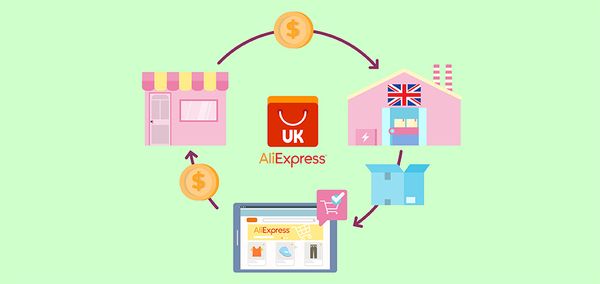Inventory Turnover Ratio for E-Commerce Industry: Boost Your Profit Margins

Managing inventory efficiently is crucial for maximizing profit margins in e-commerce. One key metric for achieving this is the inventory turnover ratio, which indicates how often a business sells and replaces stock. Optimizing this ratio helps businesses improve cash flow, reduce storage costs, and minimize waste. By understanding and applying this metric, e-commerce businesses can make informed decisions regarding stock levels, pricing, and inventory management, ultimately driving greater operational efficiency and stronger profit performance.
How to Calculate Inventory Turnover Ratio
The inventory turnover ratio is a straightforward yet vital metric for e-commerce businesses to assess how well they are managing inventory. It measures how often a business sells and replaces its inventory over a specific period. This can help determine how efficiently a company is using its stock to generate sales.
Formula:
Inventory Turnover Ratio=Cost of Goods Sold (COGS)/Average Inventory
- Cost of Goods Sold (COGS): This refers to the total cost of producing or purchasing the products that were sold within a given period. It includes expenses directly related to the goods, such as manufacturing costs, wholesale purchase prices, or the cost of the product at retail.
- Average Inventory: This is the average value of inventory held during a specific period. To calculate the average inventory, take the sum of the beginning inventory and the ending inventory, then divide by two.
- Average Inventory=Beginning Inventory+Ending Inventory/2
Once you have the values for COGS and average inventory, you can apply the formula to find the inventory turnover ratio.
The resulting inventory turnover ratio provides insight into how quickly a business is moving its products. A higher ratio indicates that products are being sold and replenished rapidly, suggesting efficient inventory management. On the other hand, a lower ratio may indicate that inventory is slow-moving, possibly leading to overstocking and higher holding costs.
By regularly calculating and tracking this ratio, e-commerce businesses can identify trends, adjust their ordering strategy, and ultimately optimize their inventory management practices.

|
Find Better Supplier For Products DSers Supplier Optimizer - One click to filter out the most proper suppliers for your products |
What Is a Good Inventory Turnover Ratio
The interpretation of a "good" inventory turnover ratio can vary across industries, business models, and product types. However, understanding what constitutes a good ratio is critical for e-commerce businesses to make data-driven decisions.
Industry Variability
The ideal inventory turnover ratio depends on the industry in which a business operates. For instance, businesses selling fast-moving consumer goods (FMCG) such as clothing, electronics, or beauty products typically aim for a high turnover ratio. These products have a short shelf life and tend to sell quickly, requiring businesses to replenish inventory more frequently.
On the other hand, businesses that deal in luxury items or specialized goods like high-end electronics, luxury watches, or bespoke furniture may have lower turnover ratios. These products are less likely to sell as quickly due to their higher price points and longer product lifecycles.
Here’s a general idea of what turnover ratios might look like across different sectors:
- FMCG (e.g., apparel, beauty products): A ratio between 4 to 6 or higher might be considered optimal, as these items typically have high demand and quick sales cycles.
- Durable Goods (e.g., electronics, furniture): Businesses in these categories might see turnover ratios closer to 1 to 2, reflecting longer sales cycles and higher price points.
- Luxury Goods (e.g., watches, designer handbags): A ratio of around 1 is typical, as these products have higher profit margins and sell less frequently.
What Affects a "Good" Ratio
Several factors can influence the ideal inventory turnover ratio:
- Product Type: High-turnover goods like fashion or consumables tend to have faster sales, while expensive, durable, or seasonal items may sell more slowly.
- Market Demand: If demand is high for a product, it will naturally sell faster, leading to a higher turnover ratio.
- Pricing Strategies: Competitive pricing can lead to quicker sales, boosting turnover ratios. However, if prices are set too high, the turnover ratio may decline.
- Sales and Marketing Efforts: Effective marketing campaigns, optimized SEO strategies strong customer outreach (such as social media advertising) can increase demand and speed up product sales.
Is High Inventory Turnover Good or Bad
A high inventory turnover ratio is often seen as an indicator of operational efficiency, but it doesn’t always tell the full story. While a high ratio is generally positive, it can come with certain risks if not properly managed.
Advantages of a High Inventory Turnover Ratio:
- Improved Cash Flow: A higher turnover rate means that products are sold quickly and inventory is replenished often. This leads to faster cash inflows, allowing a business to reinvest in additional stock or other areas of operation, helping to maintain liquidity.
- Reduced Storage Costs: With higher turnover, inventory spends less time in storage. This means businesses incur fewer costs for warehousing, handling, and insurance, which can quickly add up.
- Minimized Risk of Obsolescence: The faster inventory moves, the less likely it is to become obsolete or out of date. This is especially important for e-commerce businesses selling trend-sensitive products like fashion or technology.
- Increased Flexibility: A high turnover rate allows businesses to respond quickly to changes in demand, updating product offerings and introducing new stock without being weighed down by unsold inventory.
Drawbacks of High Inventory Turnover:
- Stockouts and Lost Sales: If inventory is selling too quickly, a business may run out of stock, leading to missed sales opportunities and potentially frustrated customers. This is especially true for high-demand products with limited supply.
- Pressure on Supply Chains: A high turnover ratio places a heavy burden on suppliers and logistics operations. Businesses may need to reorder more frequently, which can put strain on vendor relationships and lead to higher shipping costs.
- Decreased Profit Margins: Some businesses may reduce prices to increase sales velocity, which could erode profit margins. If the turnover ratio is driven by excessive discounting, it may hurt overall profitability.
- Frequent Reordering Costs: Constantly replenishing inventory means additional administrative costs and potentially higher freight or procurement costs, particularly when shipping in smaller, more frequent orders.
The Importance of Balance
While a high turnover ratio often signals that inventory is being managed efficiently, businesses need to maintain a balance to avoid stockouts, customer dissatisfaction, and over-reliance on aggressive marketing or discounting strategies. The key is to find an optimal turnover rate that ensures both product availability and healthy profit margins.
How to Apply Inventory Turnover Ratio to a Business
Tracking inventory turnover is essential for understanding how well a business is managing its stock and whether there’s room for improvement. E-commerce businesses can apply this ratio to improve their operations in several key areas:
1. Identifying Slow-Moving Products
By analyzing inventory turnover, businesses can identify products that aren't selling quickly enough. These slow-moving items tie up capital, increase storage costs, and may even become obsolete. Regularly monitoring turnover rates can help businesses make informed decisions, such as offering promotions, bundling products, or discontinuing products that aren’t performing.
2. Optimizing Stock Levels
Inventory turnover provides valuable insight into the right amount of stock to hold at any given time. A high turnover ratio indicates that the business is able to sell inventory quickly and should consider ordering products in smaller, more frequent batches. A lower turnover rate suggests that inventory is moving slowly, and stock levels may need to be adjusted to avoid overstocking.
3. Enhancing Cash Flow Management
A faster inventory turnover frees up cash tied up in stock, which can be reinvested into marketing, new product launches, or business expansion. By optimizing the ratio, e-commerce businesses can improve cash flow and better allocate resources to areas that yield a high return on investment.
4. Improving Supplier Relationships
Tracking inventory turnover helps businesses assess whether suppliers are meeting demand and delivering products on time. If turnover is low, businesses may need to renegotiate order quantities or improve their supplier relationships to ensure that products are stocked more efficiently. Similarly, businesses with high turnover may need to establish stronger communication with suppliers to avoid stockouts.
5. Fine-Tuning Pricing and Promotions
Inventory turnover also provides valuable information about how pricing and promotions are affecting product sales. If turnover is low despite promotions, it may indicate that the pricing is not competitive or that the promotions are ineffective. On the other hand, a very high turnover could be a sign that a product is priced too low, and margins are being compromised.
Conclusion
The inventory turnover ratio is a vital metric that can help e-commerce businesses optimize their operations, increase cash flow, and improve profit margins. By understanding how to calculate and interpret the ratio, business owners can make informed decisions about inventory levels, pricing strategies, and supplier relationships.
While a high turnover ratio generally indicates operational efficiency, it’s important to find a balance between fast-moving stock and the risks of stockouts or lower profit margins. By using this ratio to monitor inventory performance regularly, e-commerce businesses can stay ahead of the competition, reduce costs, and position themselves for long-term success.
Need more information about dropshipping? Explore DSers now!











 Company
Company
 Why Choose DSers
Why Choose DSers
 Blog
Blog
 Help Center
Help Center




 Live Chat
Live Chat